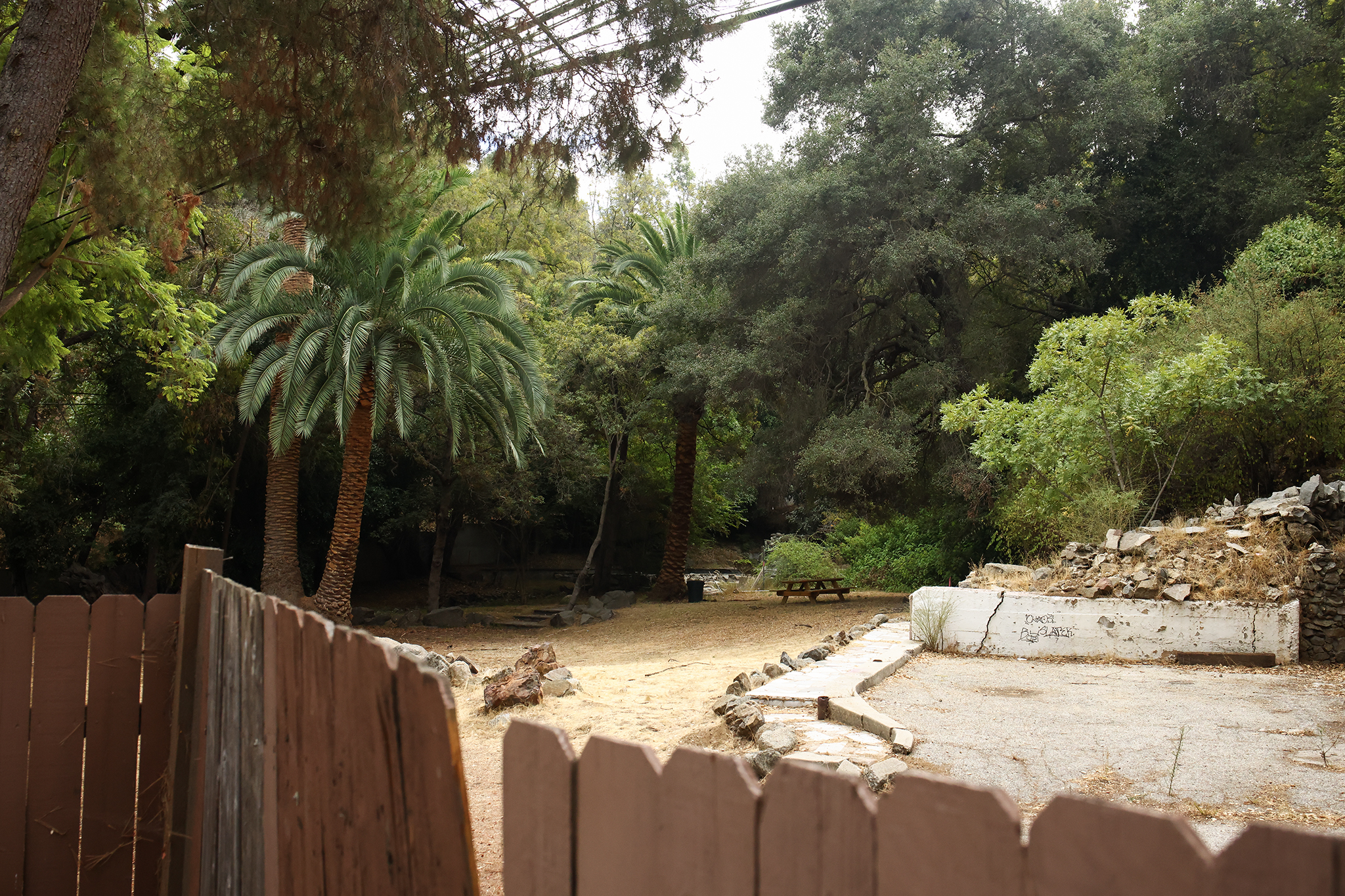
If there’s one thing most outsiders know about Los Angeles, it’s that water is often scarce in the drought-stricken region.
Fights and political jostling over water rights have shaped much of Southern California’s history, and water availability has been at the center of a century of development and industry in what is now the nation’s most populated county. As population and development pressures grew in the early 1900s, the once-wild Los Angeles River was channelized in concrete, private landowners constructed dams to keep more water for themselves and entrepreneurial developers sold off access to private lakes.
But a recent purchase of a natural water source in a wealthy corner of Los Angeles bucks this trend. Instead of grand plans to make a profit from the rare spring, a local conservation group purchased the site just to leave it alone.
Advertisement
Article continues below this ad
Last summer, Citizens for Los Angeles Wildlife, or CLAW, and the Mountains Recreation and Conservation Authority purchased the approximately 2.5-acre parcel that’s home to Laurel Spring for $1 million after two months of intense and hurried fundraising.
The land will be owned and managed by the Mountains Recreation and Conservation Authority, a local public agency focused on the Santa Monica Mountains and other nearby parkland, with a conservation easement on the parcel held by CLAW that prevents future sale or development. Restoration efforts are currently underway, with a grand opening for the public “coming soon,” according to CLAW.
The property near the corner of Laurel Canyon Boulevard and Lookout Mountain Avenue is home to a spring and stream that flow year-round, providing a valuable water source for species including mule deer, hawks, bobcats and even a mountain lion — all of which are dealing with increased habitat fragmentation from development and roadways that can make accessing the Santa Monica Mountains’ limited water sources even more difficult. Recent wildfires have also impacted precious habitat in the Santa Monica Mountains. Other efforts to restore connectivity include the world’s largest wildlife crossing, currently taking shape over Highway 101.
Advertisement
Article continues below this ad
The spring is one of about 16 year-round water sources in the eastern Santa Monica Mountains, according to Tony Tucci, the chair and co-founder of CLAW. Preserving one of these scarce springs, streams, ponds and reservoirs (that otherwise sat on a parcel of land available for private purchase) from development fits into CLAW’s mission of protecting wildlife, wildlife habitat, and wildlife corridors in the Santa Monica Mountains area.
Advertisement
Article continues below this ad
BEST OF SFGATE
History | Why a wealthy banker blasted a huge hole in a Bay Area cliff
Local | There’s a mansion hidden directly under the Bay Bridge
Culture | Inside the Bay Area’s cult-like obsession with Beanie Babies
Local | The world’s last lost tourist thought Maine was San Francisco
Get SFGATE’s top stories sent to your inbox by signing up for The Daily newsletter here.
CLAW previously fundraised to purchase a 17-acre mountain parcel, which Tucci describes as “one of the largest single parcels in this area that’s getting fragmented so rapidly.” That mountain parcel feeds water into Laurel Spring.
The Laurel Spring parcel is across the street from the historic Houdini Estate (former home of the famous magician) and is located in Laurel Canyon, known as a center of the 1960s music and counterculture scene, as well as a favorite celebrity hideout for decades before that. Today, the neighborhood tucked into the hills to the northwest of Hollywood Boulevard has transformed from a hippie haven into another expensive Los Angeles enclave, with homes listed for millions of dollars.
CLAW was outbid in a previous attempt a few years ago to buy the parcel on Laurel Canyon Boulevard, but won out this time when that buyer resold. The Laurel Spring property is steeped in history, with some visible signs of its years of human impact. The oak woodland is dotted with some ornamental, non-native plants like palm trees and redwoods while also featuring some cobblestone walkways and chimneys. There are even some mysterious, artificial caves.
Advertisement
Article continues below this ad
The property used to house a log cabin, which opened as the Bungalow Inn in the early 1900s, attracting visitors to the hill canyon near Los Angeles. The inn was later renamed the Laurel Canyon Log Cabin and became a popular roadhouse. Around that same time, entrepreneurs tried to sell off the spring’s water, with newspaper advertisements touting the “pure, sparkling spring water” from “the clear, limpid pools in the farthermost mountain recesses.”
More Los Angeles Coverage
—’The Ohtani Effect is real’: LA’s baseball king is a tourism unicorn
—The world’s longest light-rail line connects LA suburbs to the past
—NY Times loves this LA restaurant in a 106-year-old Victorian hous
—The famous ‘Brady Bunch’ house opens to public for first time ever in LA
—I ate at SF’s House of Prime Rib and Lawry’s in LA, back to back. One is much better.
For more SFGATE LA stories, subscribe to our new weekly newsletter The Southland here.
Film star Bessie Love bought the cabin in 1920, turning the property into a private residence, which was later owned by musician Frank Zappa in the 1960s. The cabin was lost to a fire and is no longer on the property — which will now be left to the animals.
Advertisement
Article continues below this ad
CLAW’s wildlife cameras have already captured hawks, owls, deer, raccoons, possums, coyotes and other creatures using the spring. In other words, according to Tucci: “Every terrestrial being that we want to protect has been to that spring.”



